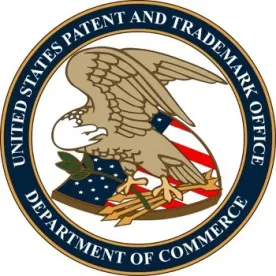Practitioners with an international patent practice generally view the U.S. written description requirement as more liberal than similar requirements in other jurisdictions, especially the European Patent Office. That said, one of the first lessons I remember learning for the USPTO patent bar is how the written description requirement is applied to numerical values and ranges. Recent decisions from the Federal Circuit and Patent Trial and Appeal Board confirm that the written description requirement limits the ability to claim specific values that cannot be discerned from the original disclosure.
Specific Values Falling Within A Range May Not Support Another Specific Value Within The Range
The claims at issue in The General Hospital Corp. v. Sienna Biopharmaceuticals, Inc. were directed to a composition comprising unassembled plasmonic nanoparticles at “a concentration of about 6.6 × 10^11 particles per ml.” The written description issue arose in the context of an interference where the application discussed the parameter at issue in terms of optical density. The PTAB used a conversion factor to relate the optical density values disclosed in the application to the “particles per ml” used in the claims, but still found support to be lacking.
In upholding the PTAB decision, the Federal Circuit noted that the application “broadly discloses that ‘the composition comprises plasmonic particles that have an optical density of at least about 1 O.D.” and disclosed specific compositions having specific optical densities corresponding to “4.10 × 10^11, 4.46 × 10^11, 7.77 × 10^11, 8.44 × 10^11, 9.31 × 10*11, 22 × 10^11, and 24 × 10^11 particles per ml.” The Federal Circuit found no error in the PTAB decision that the claims lacked written description support, even if each disclosed value was interpreted as ± 10% range:
The disclosure of a range of concentrations from less than 1 × 10^11 particles per ml to some unidentified maximum, does not provide written description support for the claimed concentration of “about 6.6 × 10^11 particles per ml,” nor does the disclosure of particular discrete values within that range, none of which are the claimed value.
A Range May Not Support A Narrower Range
The claims at issue in Grünenthal GmbH v. Antecip Bioventures II LLC recited a method of treatment that involved administering “about 80 to about 500 mg of zoledronic acid within a period of six months.” The written description challenge arose in the context of a Post Grant Review proceeding of Antecip’s U.S. Patent No. 9,283,239. The PTAB agreed with Patent Owner that the patent disclosed ranges that encompassed the claimed range, but agreed with Petitioner than the patent did not provide adequate written description support for the lower endpoint:
[T]he ’239 patent specification does not clearly allow persons of ordinary skill in the art to recognize the “about 80 mg” endpoint as part of invention described in the ’239 patent. There is no disclosure of “about 80 mg” as a preferred endpoint, no disclosure of a specific embodiment including a dose of 80 mg, nor any other description suggesting the importance or criticality of the “about 80 mg” endpoint.
Providing Written Description Support For Numerical Values And Ranges
Practitioners have devised strategies for complying with the written description requirement for numerical values and ranges, such as disclosing long lists of nested ranges, long lists of abutting ranges, long lists of specific values, etc. The disclosures at issue in these cases show that even these strategies may not be successful if it becomes necessary to claim a specific value or range that was not specified in the original disclosure.




 />i
/>i

